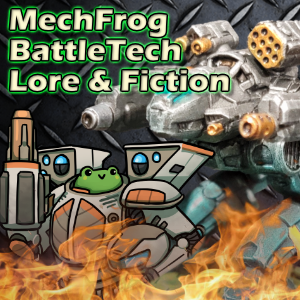Second Soviet Civil War
The Second Soviet Civil War (March 2011–March 2014) erupted following the assassination of Premier Oleg Tikonov and engulfed the Union of Soviet Socialist Republics (USSR) and its Warsaw Pact satellites. Liberal and conservative Soviet factions fought one another for control of the USSR's moribund empire, and also battled anti-Soviet nationalist rebels in Eastern Europe. The conflict was finally ended by NATO intervention, resulting in the final dissolution of the USSR and the global supremacy of the newly formed Western Alliance.
Contents
Background
By 2005 the Second Cold War had brought the Soviet Union and NATO to the brink of World War III. The ascension of the moderate Oleg Tikonov as Soviet Premier heralded a respite for both sides, as Tikonov undertook policies which eased international tensions and his own country's economic woes. These efforts culminated with the Tikonov Accords of January 2011, which pledged liberal reforms and free elections throughout the Warsaw Pact.[1]
Just four hours after the Accords were signed, Tikonov was assassinated by a suicide-bomber - an act carried out not by hardline Communists who were his chief opponents, but a Islamic militant named Mustafa Khemar Rhasori. A power struggle erupted as members of the Politburo and KGB sought to either realize Tikonov's vision or return the USSR to purer Communist roots. Non-Russian nationalists soon added to the volatile situation; on March 3, ethnic Ukrainians seized control of Kiev and announced the secession of their homeland. Two weeks later, East Germany and Czechoslovakia declared their intent to withdraw from the Warsaw Pact.[2]
The Second Soviet Civil War
As these nationalist revolts threatened the very integrity of the USSR, the KGB Director, Admiral Sergei Tarantoff, assumed control of the Soviet military and declared the Soviet Union to be under martial law. His brutal methods only fanned the flames and in short order the enormous Soviet military split into liberal and conservative factions, openly battling one another for control of the USSR.Cite error: Closing </ref> missing for <ref> tag
The fighting dragged on for three years as the liberal and conservative factions battled one another and secessionist regions. Over fifteen million civilians were killed during the civil war, and the threat of a full-scale nuclear exchange between the Soviets and NATO was an ever-present concern for the world. Western nations tried to render humanitarian aid without actively participating in the war itself, but by early 2014 NATO finally felt compelled to intervene.[1] [3] [4]
NATO Intervention and the War's End
NATO forces began by liberating Czechoslovakia and Poland. In a gesture of solidarity for the latter's people, NATO soldiers (particularly armored vehicle crews) took up the defiant fist symbol themselves. Of interest to later historians, ancestors of future rivals House Steiner and House Marik were both recorded as participating in these operations. Five Steiners were among the West German forces sent into Poland - and adopted the clenched fist symbol that would become the Lyran Commonwealth's motif - while Major Jan Marik returned to his ancestral Czech homeland as one of the peacekeepers and later settled in Prague.[1] [3] [5]
The Western powers then sought to further assist the liberals by mounting amphibious landings at various points along the Soviet coast, most notably the Latvian city of Riga, in January 2014. Coupled with recent defeats at Minsk and Leningrad which they attributed to "capitalist freebooter" aid to their enemies, this led to Soviet conservative officers launching a limited nuclear strike against both West and East Germany and NATO bases. The Western Orbital Defense Network (WODeN), housed on Crippen Station, played a pivotal role in destroying the ICBMs and thereby saved humanity by averting the full-scale nuclear exchange this would have precipitated.[1] Cite error: Closing </ref> missing for <ref> tag
Notable Dates
- 2011, Start of Second Soviet Civil War.
- 2013, Battle of Moscow. Brigadier Arthur Davion is titled as a baron.
- 2014, End of Second Soviet Civil War.
- 2014, Formation of the Western Alliance.
- 2014, Formation of the Democratic Republic of European Russia.
- 2014, Formation of the People's Union of Kazakh.
- 2014, Formation of the Islamic Republic of Turkmen.
- 2014, Formation of the Soviet Socialist Republic.
- 2014, Formation of the Democracy of Yakut.
- 2014, Formation of the Magadan Socialist Republic.
- 2014, Formation of the Confederation of Free Orient Peoples.


